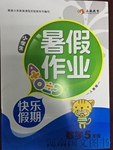题目内容
They form a polar molecule, ____ is, ____ with a slightly positive end and a slightly negative end.
- A.which; that
- B.it; one
- C.that; one
- D.one; that

 永乾教育寒假作业快乐假期延边人民出版社系列答案
永乾教育寒假作业快乐假期延边人民出版社系列答案How much rain has fallen on the earth in the past? Man has not always kept weather records. Because scientists need a way to learn about past rainfall, they study the tree rings.
A tree’s trunk (树干) keeps growing year by year. Under its bark (树皮), a tree adds a layer of new wood each year it lives. If you look at a tree stump, you can see the layers. They are called annual ring (年轮).
On some trees, all of the rings are of the same width. But the ponderosa(美国黄松) that grows in the American southwest have rings in different withes. The soil in he southwest is dry. The pines depend on rainfall for water. In a year of good rainfall, they form wide rings. In a dry year, they form narrow ones.
Scientists do not have to cut down a pine to study its rings. With a special tool, they remove a narrow piece of wood from the trunk without harming the tree. Then they look at the width of each ring to see how much rain fell in the year it formed.
Some pines are hundreds of years old and have hundreds of rings. These rings are from an annual record o0f past rainfall in the southwest.
1.We could infer from the passage that ______.
|
A.a tree grows faster when it has a lot of water |
|
B.scientists cut down trees to study tree rings |
|
C.pine trees form rings of he same width every year |
|
D.the ponderosa grows in he southeast |
2.A tree grows a new layer of wood _____.
|
A.each week |
B.whenever it rains |
C.every year |
D.every season |
3.On the whole, the passage is about _____.
|
A.why the tree trunks grow bigger |
|
B.why scientists study tree rings |
|
C.trees that lived hundreds of years ago |
|
D.the ponderosa in the US |
4.The scientists _____ to know how much rain fell in a certain area in the past.
|
A.climbed up the tree |
B.moved the pine tree |
|
C.removed a piece of wood |
D.studied the width of the tree rings |
5.Which of he following is true according to the passage?
|
A.Young trees have fewer annual rings than old one. |
|
B.The trunk of a tree never changes in size. |
|
C.Trees in the southwest do not need rain. |
|
D.Soil in the southwest is fit for the growth of trees. |